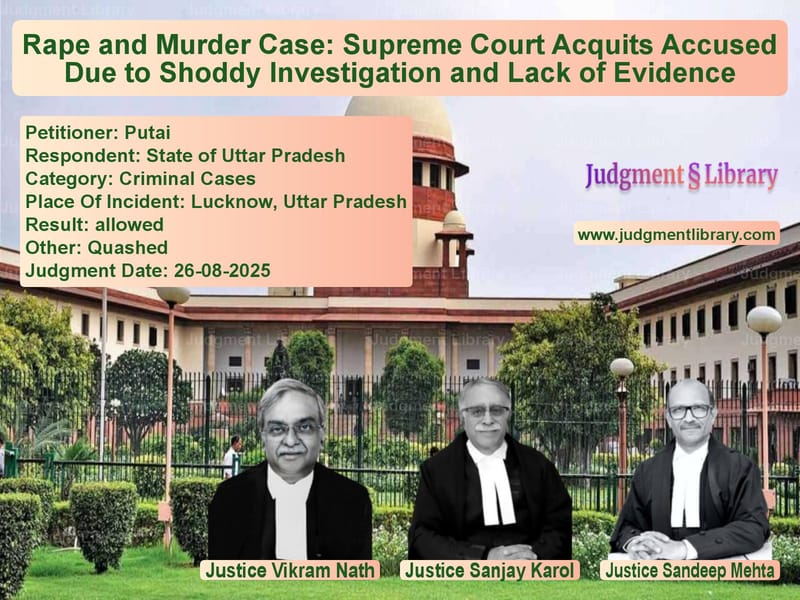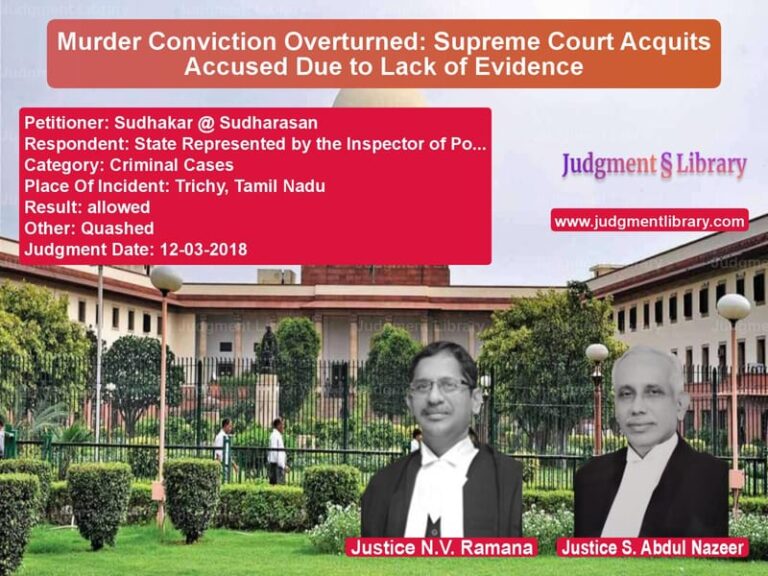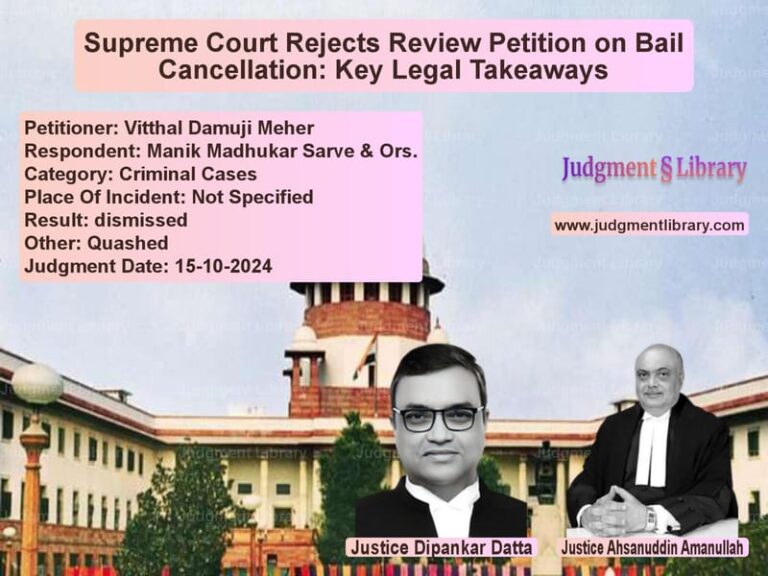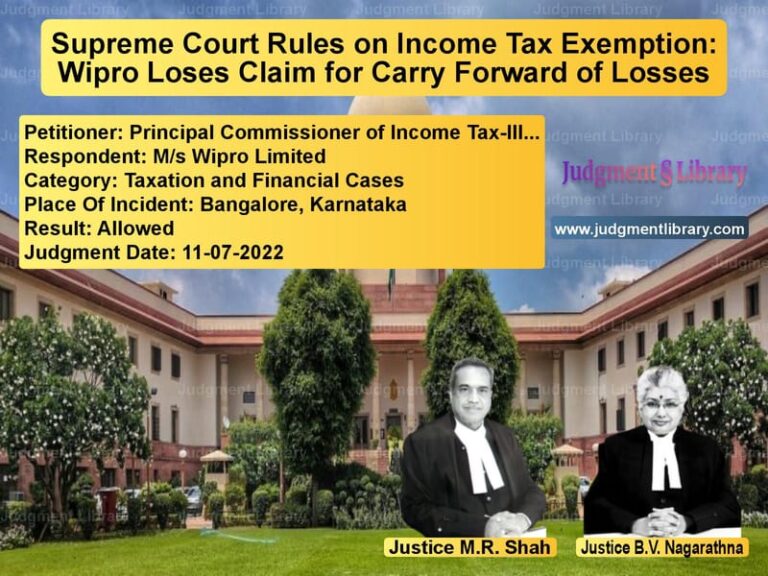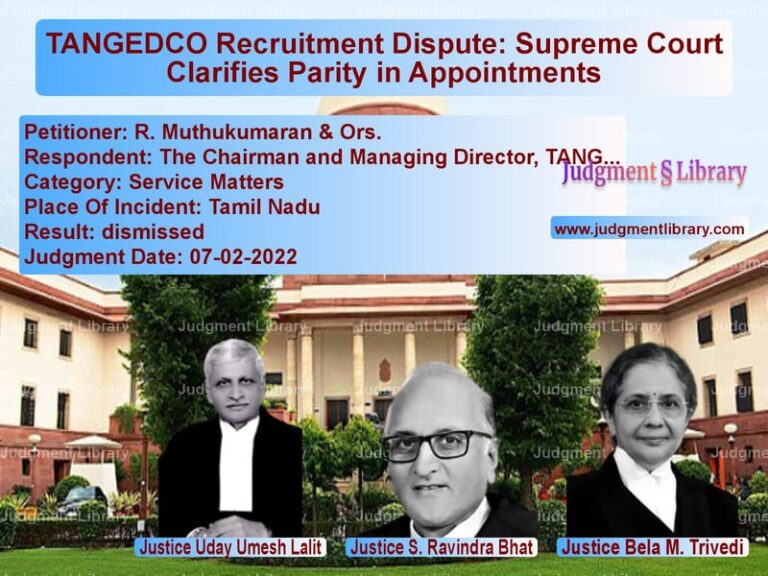Rape and Murder Case: Supreme Court Acquits Accused Due to Shoddy Investigation and Lack of Evidence
In a landmark judgment that highlights the critical importance of proper investigation and evidence collection in criminal cases, the Supreme Court of India has acquitted two men accused of the brutal rape and murder of a 12-year-old girl in Uttar Pradesh. The case, which had resulted in death penalty for one accused and life imprisonment for another, has been overturned by the apex court citing “lackluster and shabby investigation” and failure to prove guilt beyond reasonable doubt.
The tragic case dates back to September 4, 2012, when a 12-year-old girl went missing after stepping out of her home in Lucknow to answer nature’s call in the evening. Her disappearance triggered an extensive search throughout the night by family members and neighbors. The next morning, the search yielded horrifying results – the girl’s personal belongings including her chappals, water canister, and underwear were found in a field, and her denuded dead body was discovered in a nearby paddy field.
The Prosecution’s Case
The prosecution built its case around circumstantial evidence, alleging that Putai and Dileep – both neighbors of the victim’s family – had committed the heinous crime. The prosecution presented several key pieces of evidence including the recovery of the victim’s personal items from Putai’s cultivated field, DNA reports, witness testimonies about the accused’s suspicious behavior, and the use of a sniffer dog that allegedly led investigators to Dileep’s house.
The trial court convicted both accused in March 2014, sentencing Putai to death and Dileep to life imprisonment. The High Court confirmed these sentences in October 2018. However, the Supreme Court found fatal flaws in the entire investigation and evidence collection process.
The Supreme Court’s Scrutiny
The three-judge bench comprising Justices Vikram Nath, Sanjay Karol, and Sandeep Mehta conducted a meticulous examination of the evidence and found multiple serious lapses in the prosecution’s case. The Court made several crucial observations that formed the basis of their decision to acquit the accused.
One of the most significant findings was regarding the DNA evidence. The Court noted that “the prosecution failed to lead any evidence whatsoever so as to prove the procedure, date or time of drawing the blood samples of the accused-appellants for the purpose of conducting the DNA comparison. Neither any oral evidence was led to prove this procedure, nor did the prosecution exhibit any document to fortify the same. There is a total lack of evidence regarding the chain of custody of these blood samples.”
The Court was particularly critical of the supplementary DNA report that emerged during the appeal process, stating that “the supplementary DNA report dated 2nd December, 2014, which was produced during pendency of the appeals before the High Court is also inconsequential and inadmissible because neither did the prosecution bother to recall the scientific expert, Dr. Archana Tripathy (PW-12) to prove this report nor was this report put to the accused-appellants by way of supplementary questioning under Section 313 CrPC.”
Flaws in Investigation
The judgment highlighted numerous investigative failures that compromised the case. The Court observed that “the personal articles of the child victim, i.e., the frock and the underwear which he seized were never forwarded to the FSL. It is indeed surprising that in a case of such grave nature, the Investigating Officer (PW-9) did not care to forward these crucial articles to the FSL. The scientific analysis of these articles might have provided vital evidence for proving the guilt of the accused-appellants or otherwise. The very fact that the Investigating Officer (PW-9) did not consider it essential to send the articles to the FSL gives rise to a strong suspicion that the recovery of these articles was a planted recovery.”
The Court also found serious discrepancies in witness testimonies, particularly regarding the recovery of a comb that was allegedly used to connect Dileep to the crime. The judgment noted that “there is a significant contradiction regarding the colour of the comb which was recovered by the police. Mumna (PW-1) stated that the comb was of bluish-green color. Gaya Prasad (PW-3) stated that the comb was dirty and light red coloured. Raushan Lal (PW-5) stated that the comb was of sky-blue color. Narad Muni Singh (PW-9) stated that the comb was of green colour. These contrasting versions of the witnesses regarding the colour of the comb make the recovery by itself doubtful.”
Questionable Evidence
The Supreme Court dismissed the prosecution’s attempt to portray normal behavior as suspicious conduct. Regarding the allegation that Putai was seen washing his hands and face and changing clothes, the Court stated that “Any labourer or farmer would be naturally inclined to carry out these ablutions upon returning from work and before entering one’s home. The actions as stated above are absolutely natural and would not raise any suspicion nor could the same be treated as incriminating conduct on the part of accused No.1-Putai.”
The Court also rejected the sniffer dog evidence, noting that “the procedure pertaining to the exercise of the sniffer dog taking the police team from the place of incident to the house of accused No.2 Dileep was not documented and was sought to be proved in the oral evidence of Tribhuvan Narayan Jaiswal (CW-1). Failure to prepare any contemporary document for the search by the dog squad makes the entire procedure doubtful.”
Broader Implications
In its concluding remarks, the Supreme Court made important observations about the standards of proof required in criminal cases, especially those based on circumstantial evidence. The Court emphasized that “the distance between ‘may be proved’ and ‘must be proved’ is small but has to be travelled before the prosecution can seek conviction of the accused in a case based purely on circumstantial evidence.”
The judgment serves as a stark reminder about the importance of proper investigative procedures. The Court noted that “We feel that the present case is yet another classic example of lackluster and shabby investigation and so also laconic trial procedure which has led to the failure of a case involving brutal rape and murder of an innocent girl child.”
Despite the horrific nature of the crime, the Court maintained that “We are conscious that the case involves a gruesome act of rape and brutal murder of a tender girl child aged 12 years. However, it is a settled tenet of criminal jurisprudence that in a case based purely on circumstantial evidence, the prosecution must prove its case beyond reasonable doubt. The incriminating circumstances must be such which point exclusively to the guilt of the accused and are inconsistent with his innocence or the guilt of anyone else.”
Final Ruling
The Supreme Court allowed the appeals and acquitted both accused, ordering their immediate release from prison unless required in any other case. The Court quashed and set aside the judgments of both the trial court and the High Court.
This judgment underscores the fundamental principle of criminal law that it is better for ten guilty persons to go free than for one innocent person to be convicted. While the acquittal might be difficult for the victim’s family to accept, the Court’s rigorous scrutiny of the evidence ensures that the foundations of justice remain strong, emphasizing that convictions must be based on solid evidence and proper legal procedures rather than public outrage or the gravity of the crime alone.
The case serves as an important precedent for future criminal trials, particularly those relying on scientific evidence like DNA analysis, highlighting the necessity of maintaining proper chain of custody and following established protocols in evidence collection and preservation.
Petitioner Name: Putai.Respondent Name: State of Uttar Pradesh.Judgment By: Justice Vikram Nath, Justice Sanjay Karol, Justice Sandeep Mehta.Place Of Incident: Lucknow, Uttar Pradesh.Judgment Date: 26-08-2025.Result: allowed.
Don’t miss out on the full details! Download the complete judgment in PDF format below and gain valuable insights instantly!
Download Judgment: putai-vs-state-of-uttar-prade-supreme-court-of-india-judgment-dated-26-08-2025.pdf
Directly Download Judgment: Directly download this Judgment
See all petitions in Murder Cases
See all petitions in Rape Cases
See all petitions in Judgment by Vikram Nath
See all petitions in Judgment by Sanjay Karol
See all petitions in Judgment by Sandeep Mehta
See all petitions in allowed
See all petitions in Quashed
See all petitions in supreme court of India judgments August 2025
See all petitions in 2025 judgments
See all posts in Criminal Cases Category
See all allowed petitions in Criminal Cases Category
See all Dismissed petitions in Criminal Cases Category
See all partially allowed petitions in Criminal Cases Category

